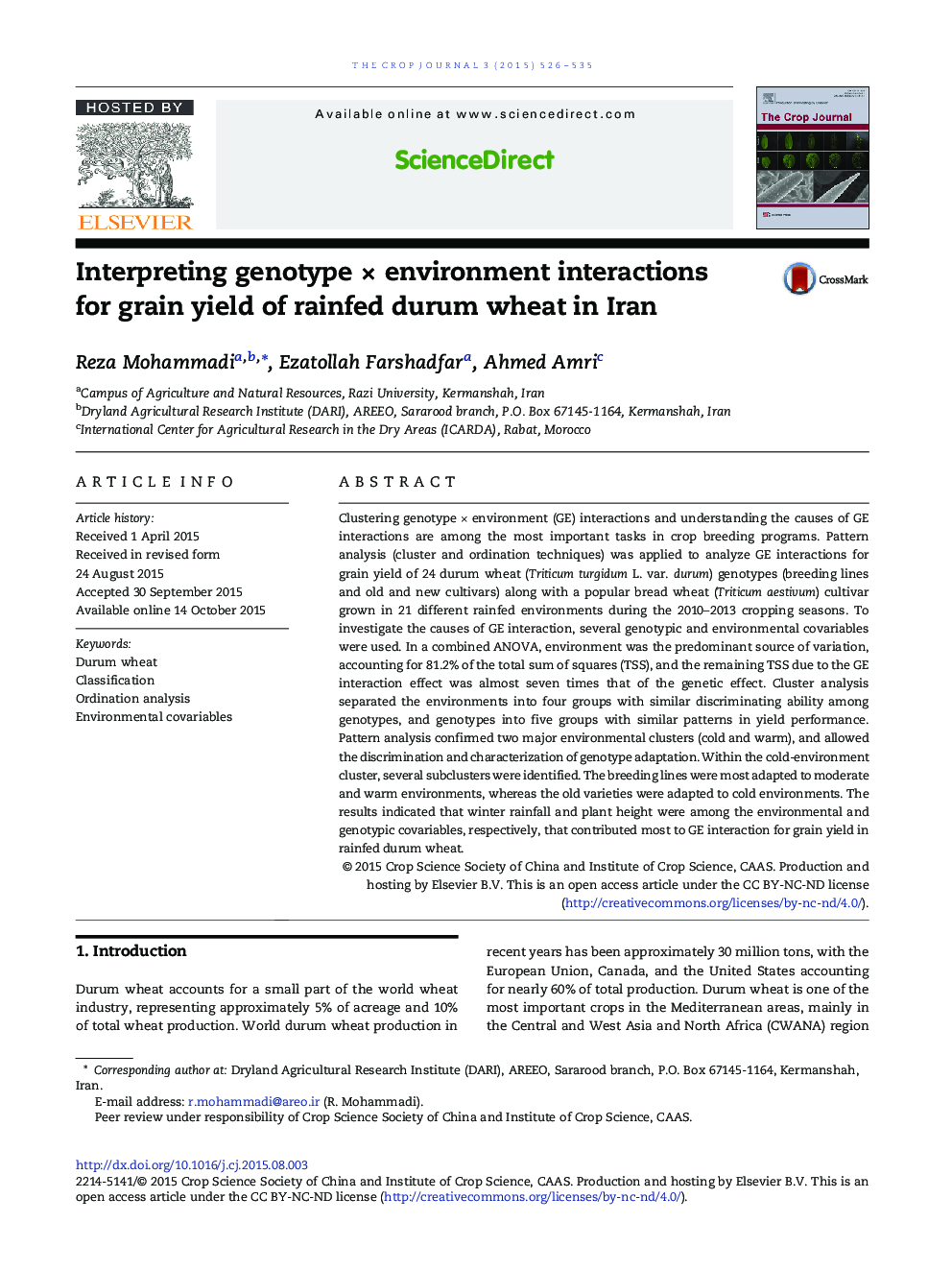| Article ID | Journal | Published Year | Pages | File Type |
|---|---|---|---|---|
| 2079576 | The Crop Journal | 2015 | 10 Pages |
Clustering genotype × environment (GE) interactions and understanding the causes of GE interactions are among the most important tasks in crop breeding programs. Pattern analysis (cluster and ordination techniques) was applied to analyze GE interactions for grain yield of 24 durum wheat (Triticum turgidum L. var. durum) genotypes (breeding lines and old and new cultivars) along with a popular bread wheat (Triticum aestivum) cultivar grown in 21 different rainfed environments during the 2010–2013 cropping seasons. To investigate the causes of GE interaction, several genotypic and environmental covariables were used. In a combined ANOVA, environment was the predominant source of variation, accounting for 81.2% of the total sum of squares (TSS), and the remaining TSS due to the GE interaction effect was almost seven times that of the genetic effect. Cluster analysis separated the environments into four groups with similar discriminating ability among genotypes, and genotypes into five groups with similar patterns in yield performance. Pattern analysis confirmed two major environmental clusters (cold and warm), and allowed the discrimination and characterization of genotype adaptation. Within the cold-environment cluster, several subclusters were identified. The breeding lines were most adapted to moderate and warm environments, whereas the old varieties were adapted to cold environments. The results indicated that winter rainfall and plant height were among the environmental and genotypic covariables, respectively, that contributed most to GE interaction for grain yield in rainfed durum wheat.
